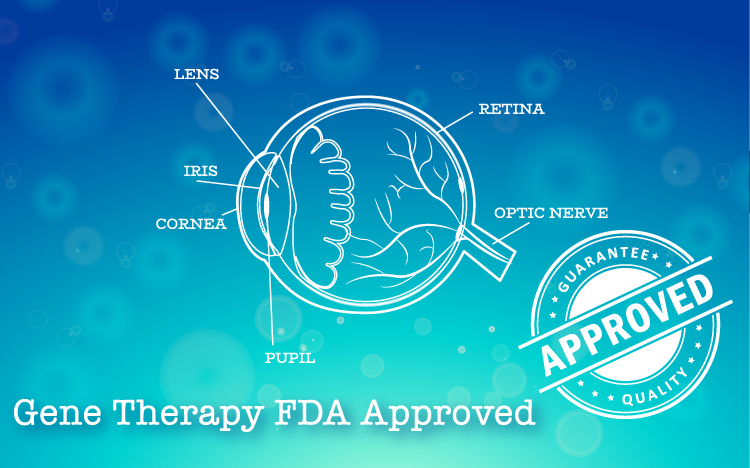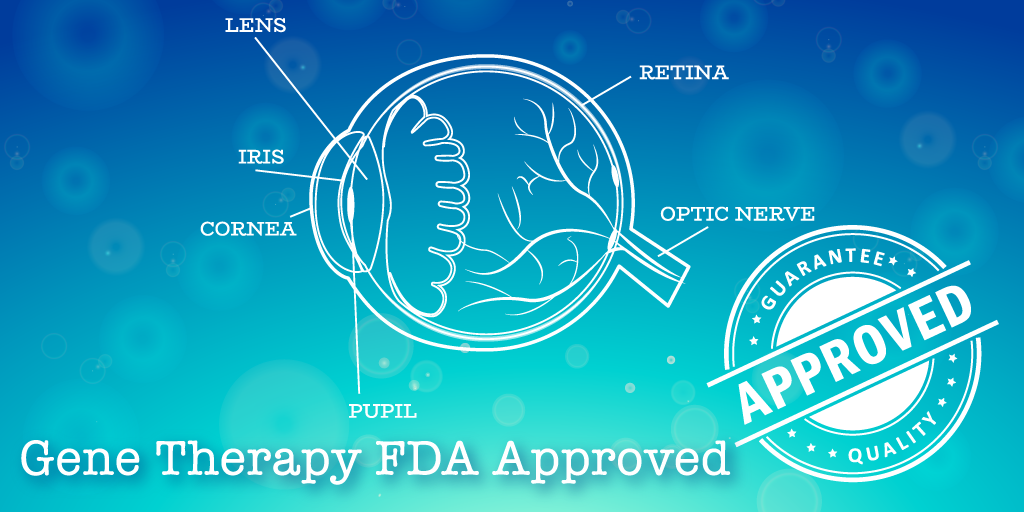FDA Approved Gene Therapy for Rare Eye Disease
December 28, 2017
FDA Approved Gene Therapy for Rare Eye Disease
The FDA (Food and Drug Administration recently approved a gene therapy treatment for patients with a rare eye disease. Children and adults with retinal dystrophy due to the mutation of the RPE65 gene see severe visual impairment beginning in infancy. As this disease progresses, patients experience a loss of central and peripheral vision. Although gradual, the loss of central and peripheral vision can eventually lead to blindness. There are over 200 genes that can cause retinal dystrophy. In order to take advantage of this new treatment, patients have to be tested to see if their retinal dystrophy caused by a mutation in their RPE65 gene.
Voretigene Neparvovec, which will be sold as Luxturna, is made by Philadelphia-based Spark Terapeutics Inc. Luxtruna is only the third gene therapy approved for use in the United States, preceded by two others this year. However, Luxturna is the first to correct an inherited genetic mutation. This approval could open the door to other treatments that correct flaws in the inherited genome.
Dr. Scott Gottlieb, the FDA Commissioner, called Tuesday’s approval a milestone for gene therapy and noted the potential for treatment of many diseases. He stated the approval, “marks another first in the field of gene therapy – both in how the therapy works and expanding the use of gene therapy beyond the treatment of cancer to the treatment of vision loss.”
How does Luxturna work?
Luxtruna supplies a normal RPE65 gene to the retinal cells. It is a liquid that is injected into the eye with a microscopic needle during a surgical procedure. Inside the liquid contains a gene therapy virus that contains a healthy version of the gene. The drug essentially adds a third version of the gene, which, unlike mutated genes, is able to code a protein crucial to vision. Like any treatment, there are some risks of course. These risks include inflammation, retinal tears and holes, elevated eye pressure, or even cataracts.
Between 2007 and 2015 researchers treated 41 patients to establish safety and efficacy. Those patients are still being followed today. In a separate trial, researchers treated 31 patients and measured changes in their vision based on their ability to complete an obstacle course in low-level light.
How long does Luxtruna work?
According to William Hauswirth, an ophthalmology professor at the University of Florida College of Medicine, the treatment is not permanent. Hauswirth was one of the professors working on Luxtruna. He stated that one study found that most patients’ vision regresses to what it was before therapy about six years later. Although not permanent, Hauswirth still considers it successful. Research is still underway to see if it is possible for patients to be treated again.
Perhaps the most well-known patient from the clinical trials is a singer Christian Guardino, who appeared on this year on season 12 of “America’s Got Talent.” Christian is a 17-year-old from Patchogue, New York who was eliminated from the show in the semifinals. Christian told his mother, Elizabeth, that the ability to walk unaided on to the stage and see faces in the audience gave him confidence. In October, he told an FDA advisory committee that the first 12 years of his life were spent in darkness, but he is now able to see things that he hadn’t seen before thanks to Luxtruna.
When Will Luxtruna Become Available?
Luxtruna will become available in the early spring. When it’s released it will become the first approved treatment option for the condition. 1,000 to 2,000 people in the United States stand to benefit from this option. Spark Therapeutics said the price of this drug and exactly when it will be released will be announced next month.
Explore Other Blog Items By Category
Recent Posts


Surgical Microscope Rentals


